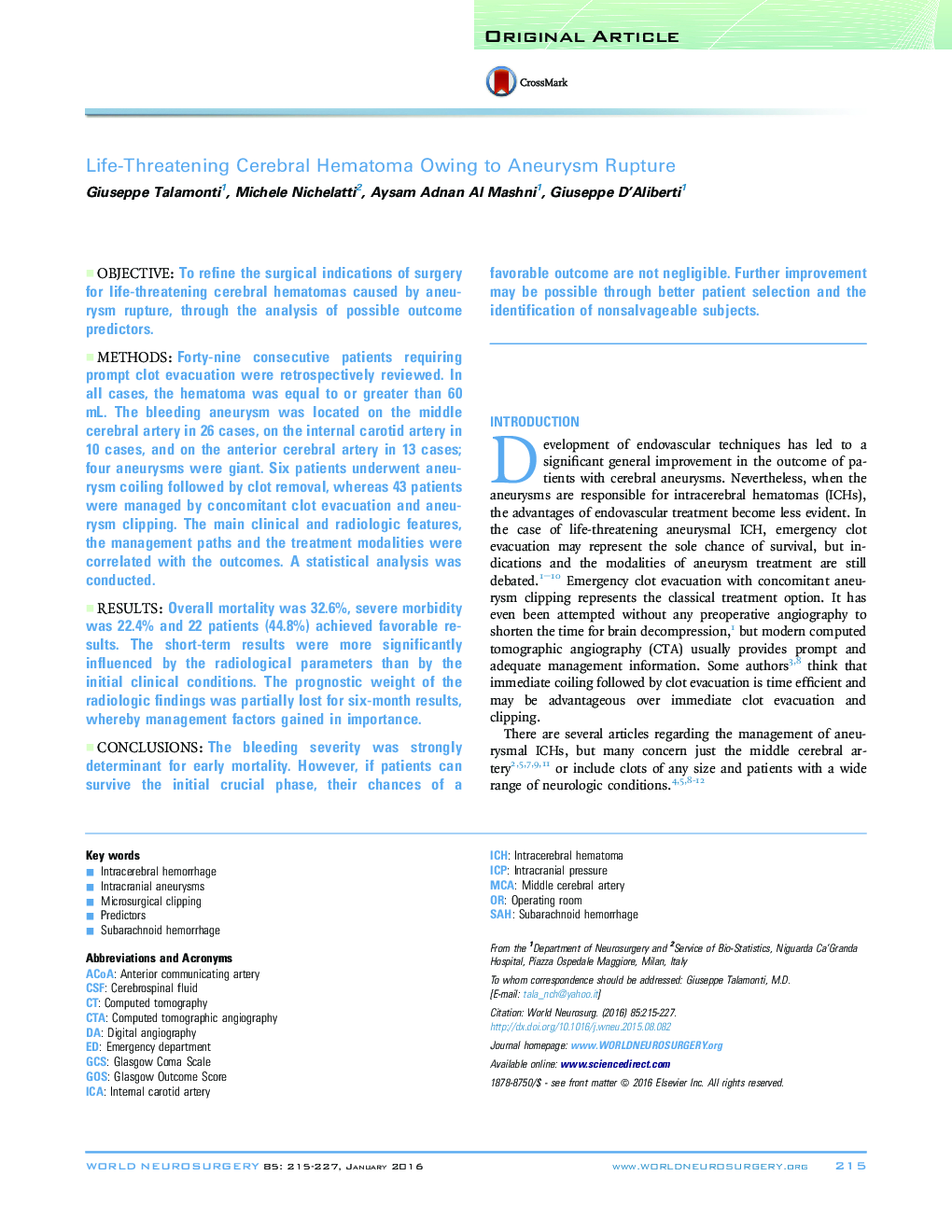| Article ID | Journal | Published Year | Pages | File Type |
|---|---|---|---|---|
| 3094898 | World Neurosurgery | 2016 | 13 Pages |
ObjectiveTo refine the surgical indications of surgery for life-threatening cerebral hematomas caused by aneurysm rupture, through the analysis of possible outcome predictors.MethodsForty-nine consecutive patients requiring prompt clot evacuation were retrospectively reviewed. In all cases, the hematoma was equal to or greater than 60 mL. The bleeding aneurysm was located on the middle cerebral artery in 26 cases, on the internal carotid artery in 10 cases, and on the anterior cerebral artery in 13 cases; four aneurysms were giant. Six patients underwent aneurysm coiling followed by clot removal, whereas 43 patients were managed by concomitant clot evacuation and aneurysm clipping. The main clinical and radiologic features, the management paths and the treatment modalities were correlated with the outcomes. A statistical analysis was conducted.ResultsOverall mortality was 32.6%, severe morbidity was 22.4% and 22 patients (44.8%) achieved favorable results. The short-term results were more significantly influenced by the radiological parameters than by the initial clinical conditions. The prognostic weight of the radiologic findings was partially lost for six-month results, whereby management factors gained in importance.ConclusionsThe bleeding severity was strongly determinant for early mortality. However, if patients can survive the initial crucial phase, their chances of a favorable outcome are not negligible. Further improvement may be possible through better patient selection and the identification of nonsalvageable subjects.
